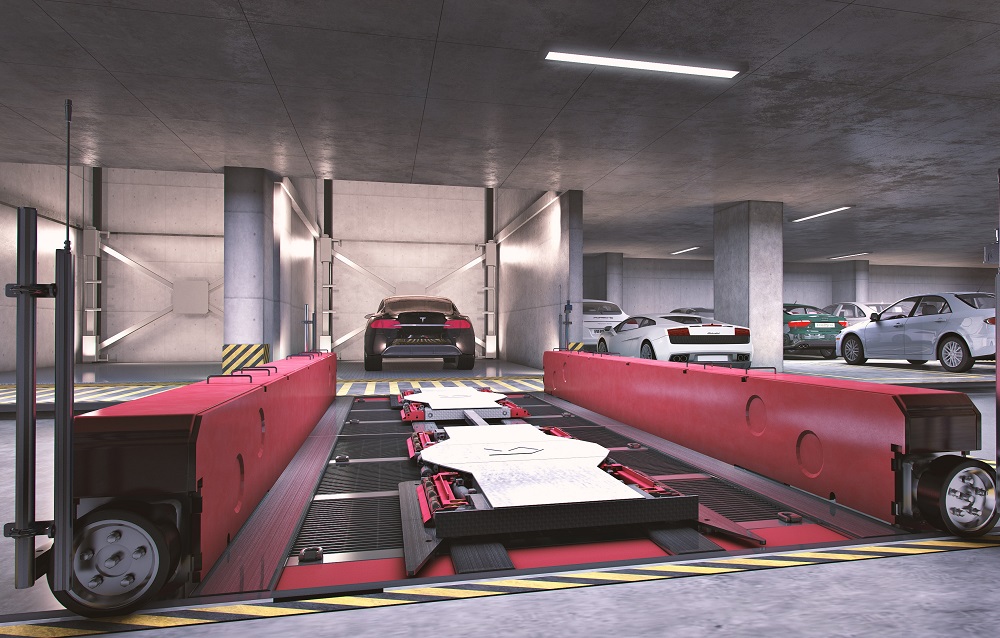By 2030, the number of electric vehicles (EVs) on American roads is projected to reach 26.4 million. Furthermore, President Joe Biden has set a goal of having 50% of all new vehicle sales be electric, again by 2030. In order to support this EV initiative, the president also announced his vision of building 500,000 new EV chargers by the end of the decade. With the future looking toward EVs, parking must become innovative to accommodate these rapid changes.

What this means for commercial and multi-family facilities is that more customers and tenants will begin to expect EV charging as an amenity. In fact, a National Multifamily Housing Council survey found that in 2022, 27% of renters were interested in EV charging stations and would pay more per month for access to them. Due to this projected demand increase, developers must prioritize EV charging stations. Automated parking systems (APSs) can include EV charging in their designs and can support further sustainability initiatives.
Less Land Use, Fewer Chargers
Traditional parking solutions include a variety of features designed with people in mind, including sidewalks, stairwells, ramps, and wide aisles for vehicles to navigate through. Because of this, conventional parking can take up a significant amount of space and, in major cities, can be responsible for up to 14% of land use.
Through more compact designs, an APS can typically store twice as many vehicles compared to conventional parking, using the same, or even less space. An APS enhances the space available by storing vehicles multiple positions deep and in smaller, tighter parking spaces, which allows for more valuable urban green space and less excavation, meaning less landfill.
Additionally, with the right APS, the issue of monopolizing charging units can be eliminated and fewer EV chargers are required. Select APS providers can remove the hassle of requiring drivers to physically plug and unplug their vehicle from the charger and prevent them from hogging available chargers by automatically connecting a direct current fast charger (DCFC) to an EV inside an APS. An APS has the ability to charge more vehicles with less charging infrastructure thanks to the nature of moving vehicles to be charged via automation to and from the DCFCs within the APS. The whole process of determining which EVs are charged, when they are charged, and for how long they are charged can be handled by the APS management software, and these details can also be provided to building owners and drivers.
Conservation and Better Utilization of Resources
To become more sustainable, facilities managers may look for ways to lower energy consumption, but with a conventional parking structure, it isn’t as easy as flipping on and off a light switch. Pedestrians need a light source as they walk to and from their vehicles, which makes lighting mandatory. By installing an APS, a facility can lower its energy consumption without putting pedestrian safety at risk.
Drivers do not have access to the vehicle storage area of an APS, which lowers the amount of lighting required. Most APSs only need lighting for maintenance and in the primary transfer area where drivers park their vehicle. Because constant lighting isn’t mandatory in an APS, these parking systems typically use 60% less electricity than traditional solutions. This reduction of energy use can offset the energy required for EV charging stations.
Protect the Environment from Car Emissions
While the use of EVs is on the rise, internal combustion engine (ICE) vehicles will continue to be on U.S. roads for the foreseeable future, so it is important to find ways to lower the effect they have on the environment. An APS can help lower emissions from ICE vehicles because a vehicle does not need to be running in order to be parked in the system.
A study by INRIX found that U.S. drivers spend an estimated 17 hours a year looking for a parking spot, and the longer a vehicle is running the more emissions are released into the environment. Since an APS eliminates the need for drivers to search for a parking spot, vehicles are turned off immediately after pulling into the transfer area, reducing emissions by up to 80%.
As more EVs hit the road, charging stations are going to be increasingly vital to support these drivers. In order to stay progressive, developers and facilities managers need to consider how they can contribute to this macro sustainability movement at a micro level. Developers can begin building a green and sustainable future with an APS, while encouraging EV use by providing easier and reliable access to charging for drivers.

Ian Todd is the executive vice president of automated parking at Westfalia.
